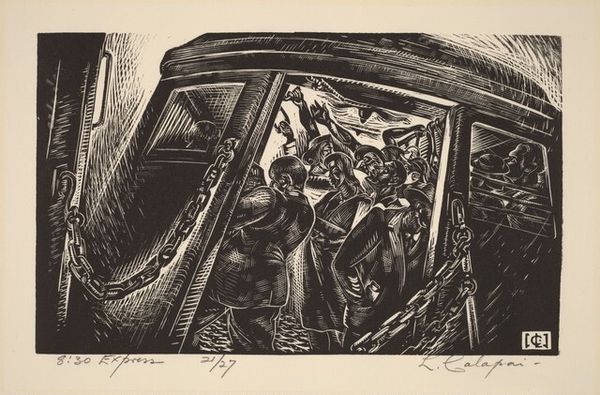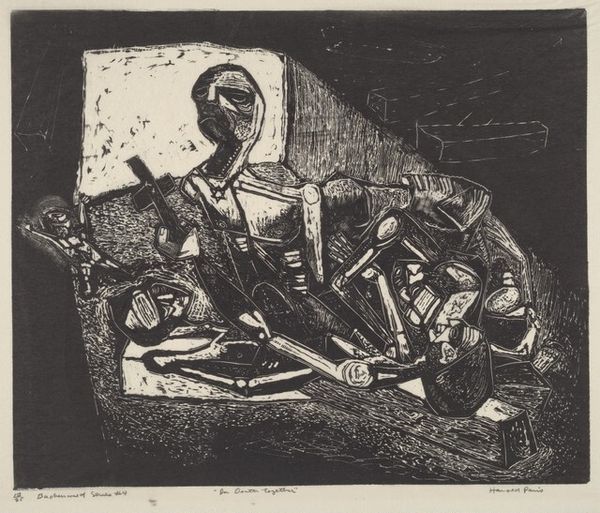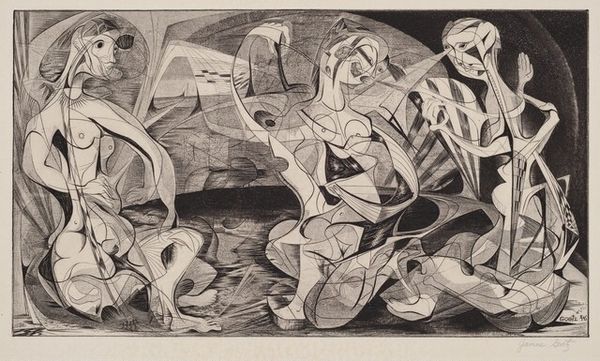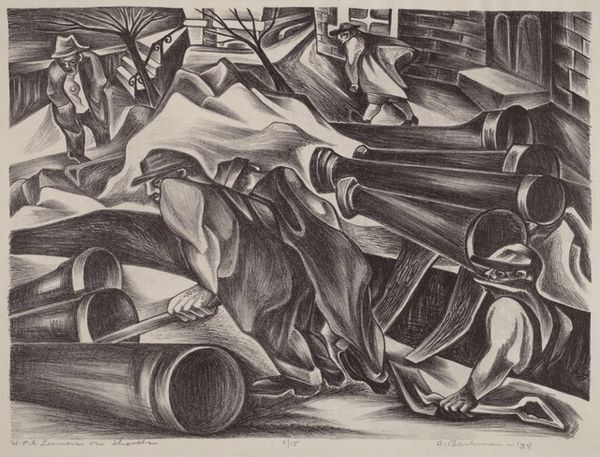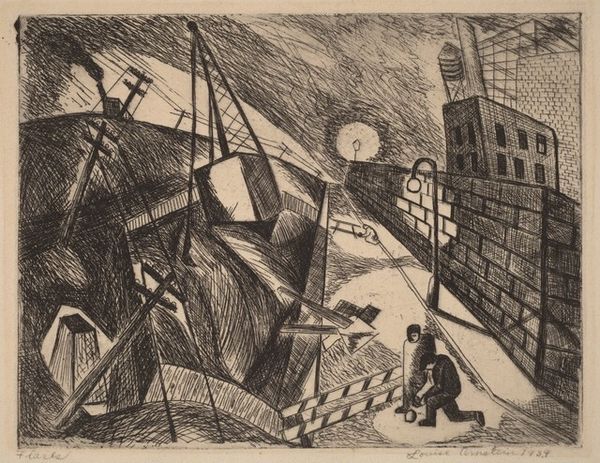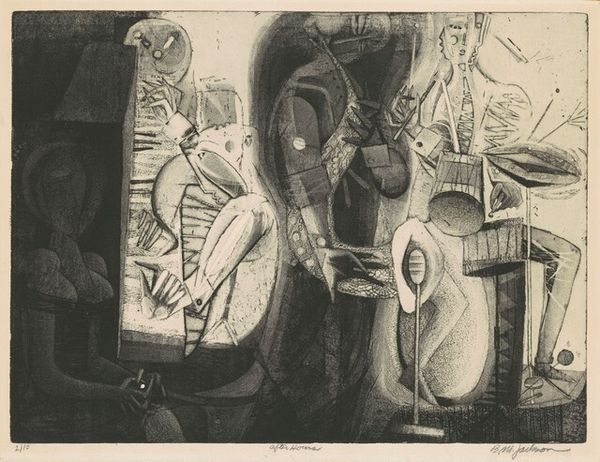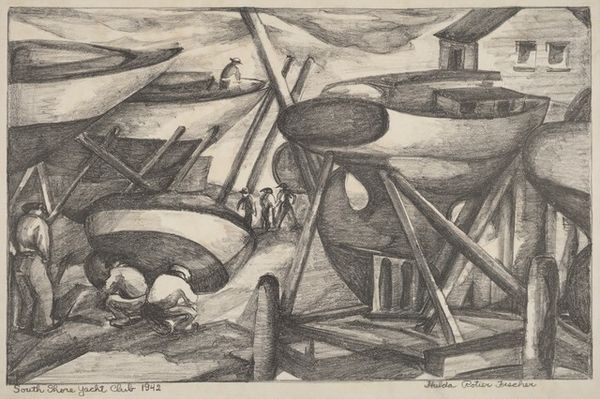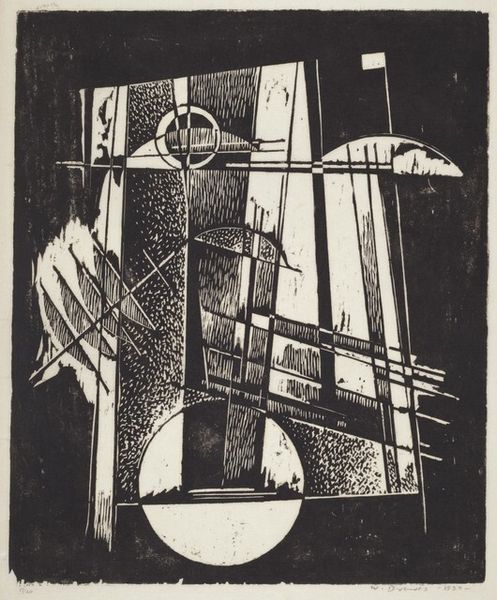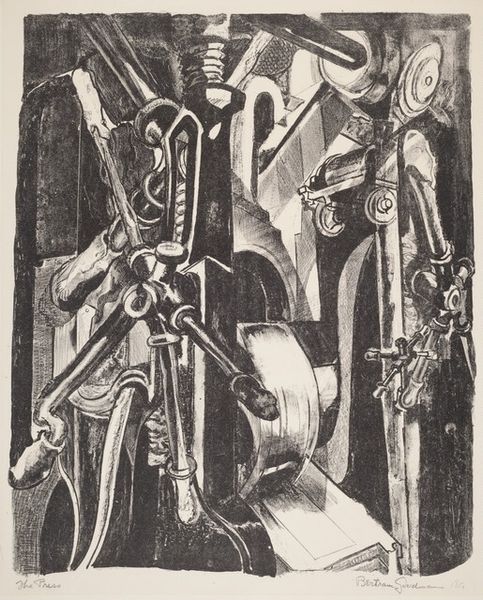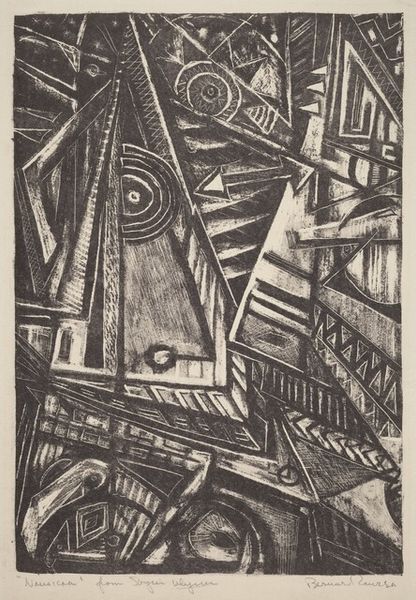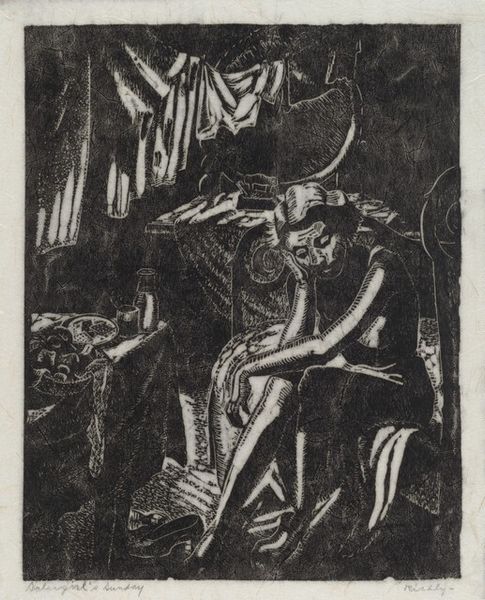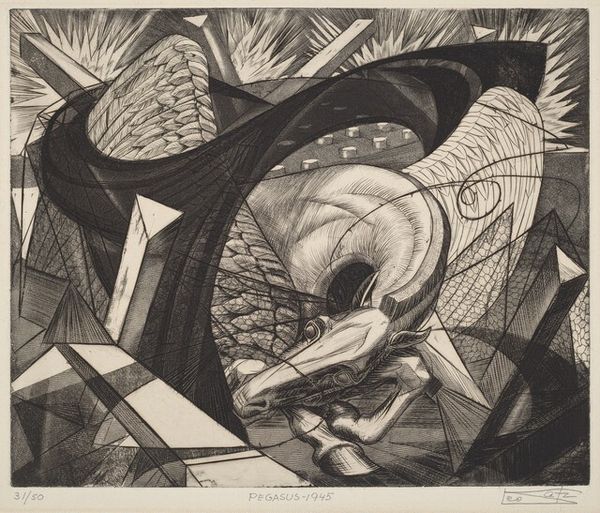
drawing, print, charcoal
#
drawing
# print
#
caricature
#
charcoal drawing
#
social-realism
#
charcoal art
#
surrealism
#
portrait drawing
#
genre-painting
#
charcoal
#
realism
Dimensions: image: 250 x 353 mm sheet: 315 x 422 mm
Copyright: National Gallery of Art: CC0 1.0
Curator: Elizabeth Olds' print, "Bootleg Mining, Pennsylvania," created in 1936. It’s a compelling charcoal drawing depicting… well, what strikes you first about this image? Editor: A sense of oppressive, claustrophobic labor. The diagonals are so aggressive, pinning the figures into the composition as if trapped within the mine itself. It's visceral, I feel a tangible anxiety radiating from it. Curator: Olds made this during the Depression era; bootleg mining emerged when unemployed miners illegally extracted coal from abandoned mines. It highlights the desperation and ingenuity born from economic hardship, and how communities mobilized to survive. We see her use of charcoal really emphasize the grit of the situation, down to the textures of tools and raw landscape. Editor: Absolutely. Consider charcoal itself, a byproduct of burnt organic matter – its creation mirrors the destruction and subsequent exploitation depicted in the scene. Notice the almost classical "Madonna of humility" pose one figure in the background, bent double as they scrabble through the spoil. It contrasts sharply with the industrial apparatus. A clear comment on value versus worth. Curator: Right, these figures take on a mythical, almost tragic status within this scene of raw materials and manual labor. Olds' social-realist style sought to represent everyday people engaged in the mundane struggles of their existence, while drawing our attention to their capacity to reshape their material conditions, albeit in a struggle. The bootleg miners rework the remnants of the mechanized industries. Editor: The recurring images of containers--the wheelbarrows, the rectangular boxes--- underscore that sense of striving, of transporting the raw material. It all points back to human need. In what feels like a deliberately destabilized perspective. They have become ciphers, barely visible bodies operating this mechanism of recovery. Curator: And that sense of precariousness! The whole scene looks as if it might collapse under its own weight – both literally and figuratively, referencing that very real instability in their material lives. This work invites reflection on the costs and implications of extraction, a powerful act of defiance inscribed in charcoal dust. Editor: A haunting portrait, revealing the stories woven into the very landscape, and reminding us that symbols of labor resonate profoundly across eras. The black and white gives a somber emotional context to how humans transform a natural setting. Curator: An evocative interplay of creation, desperation, and the human spirit rendered in the shadows of survival, reminding us to consider where, how and by whom essential materials are made accessible to a broader audience.
Comments
No comments
Be the first to comment and join the conversation on the ultimate creative platform.

